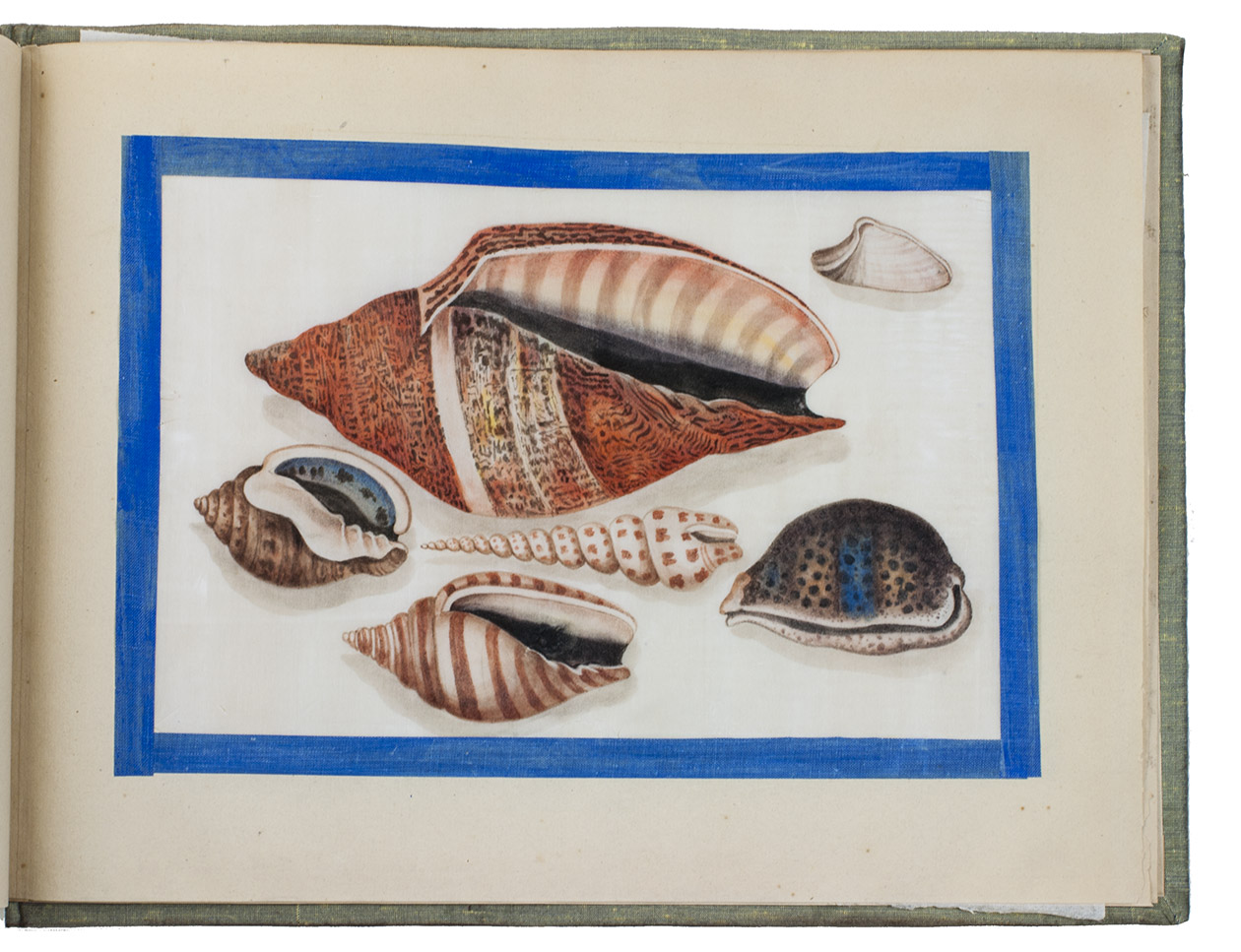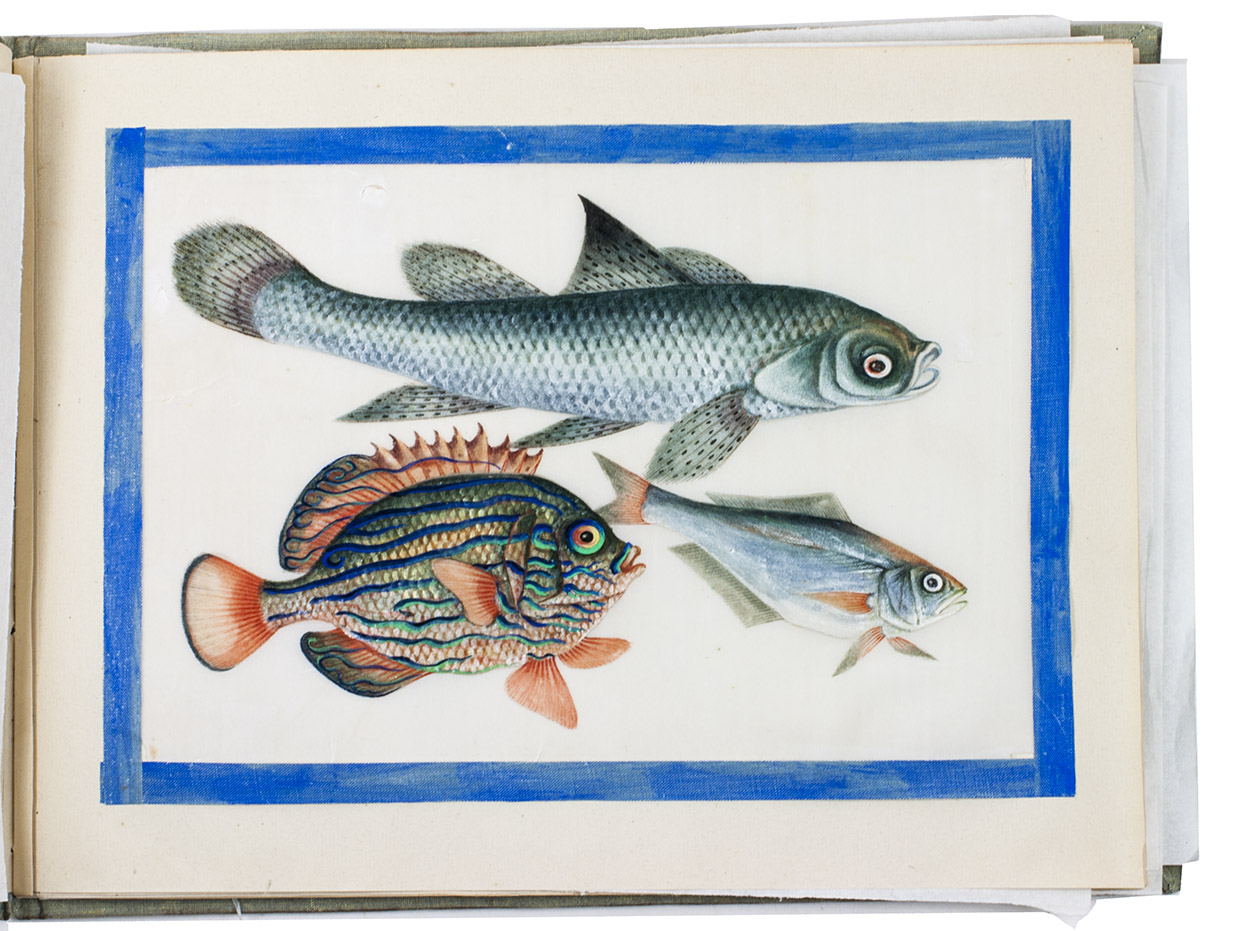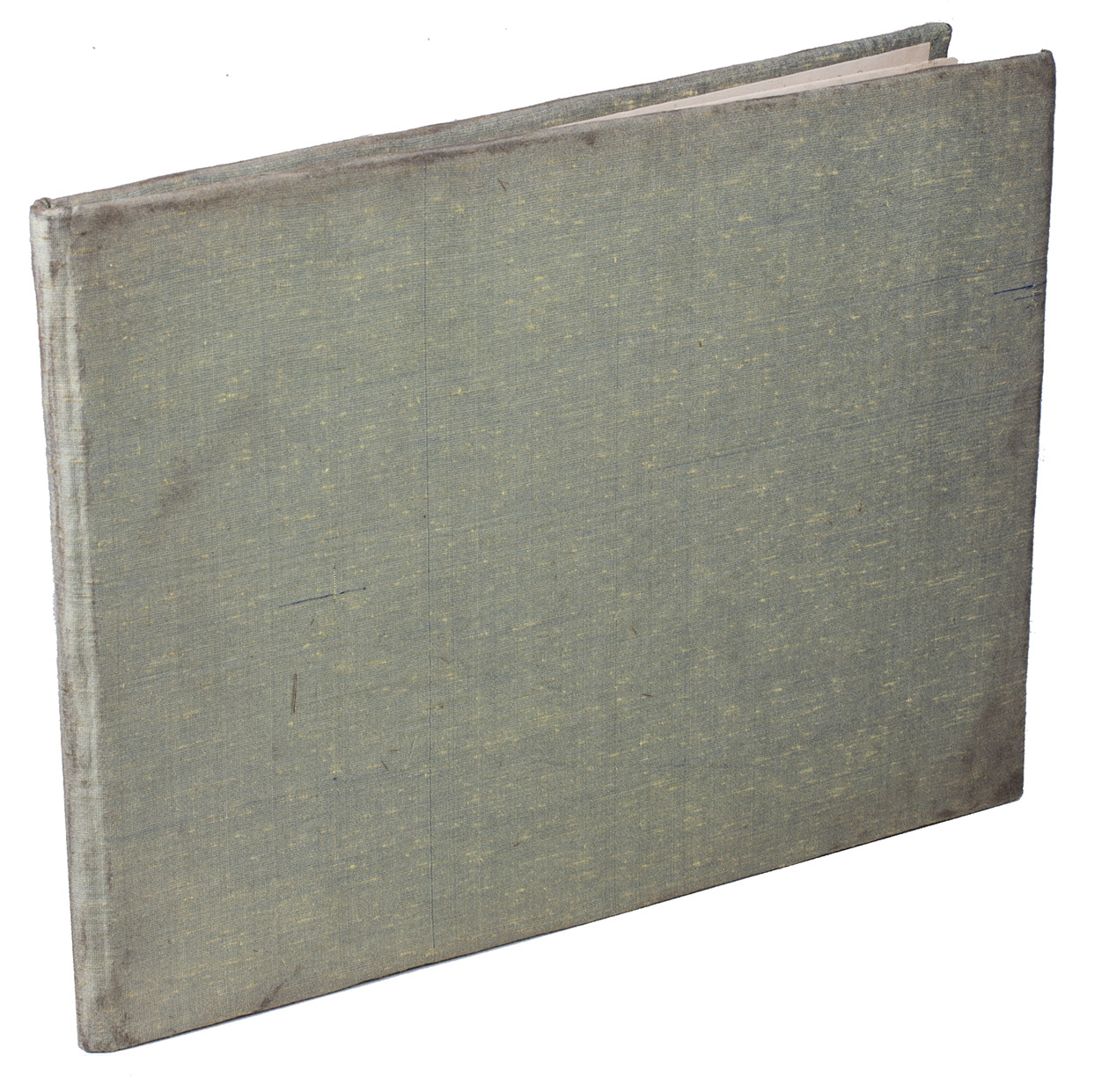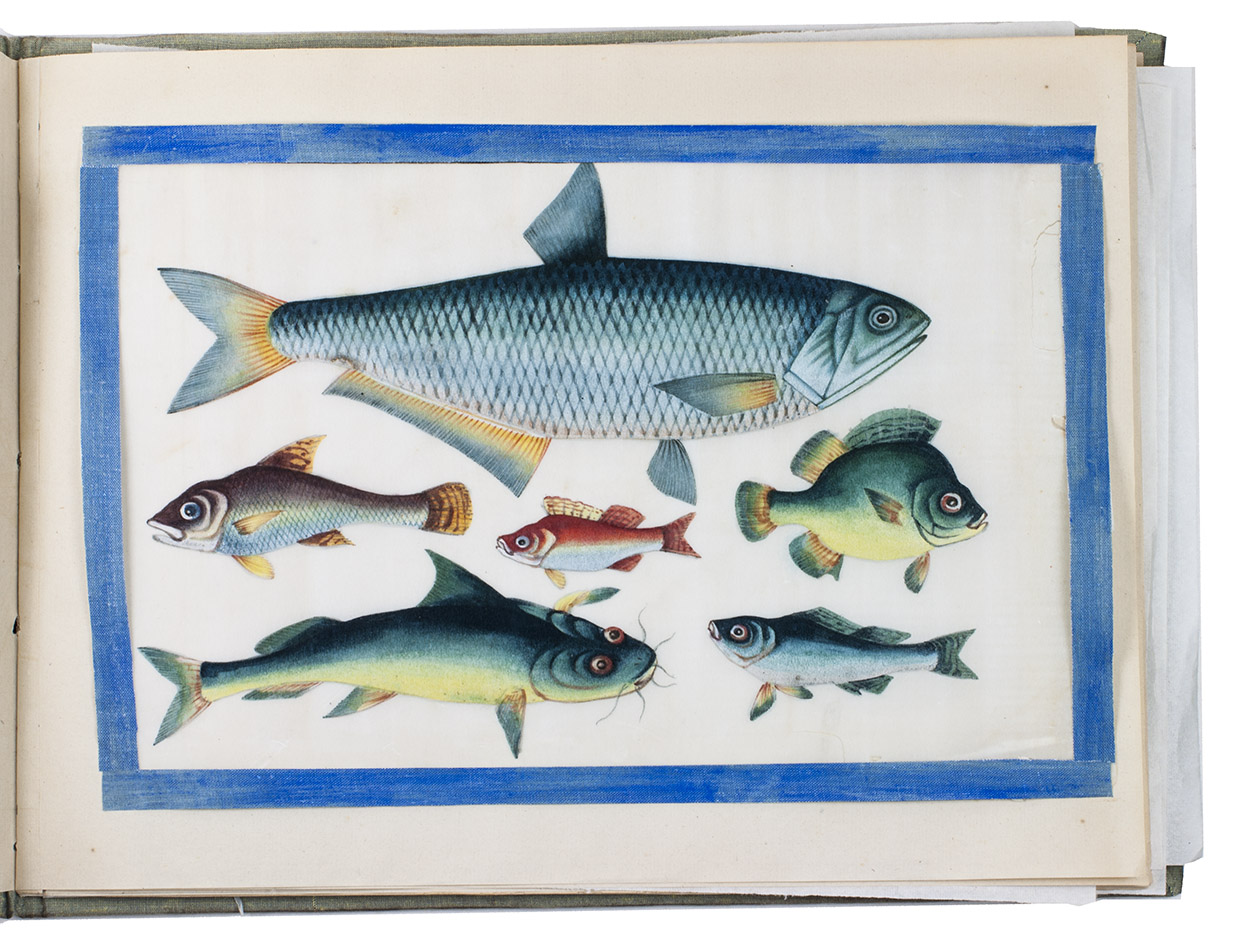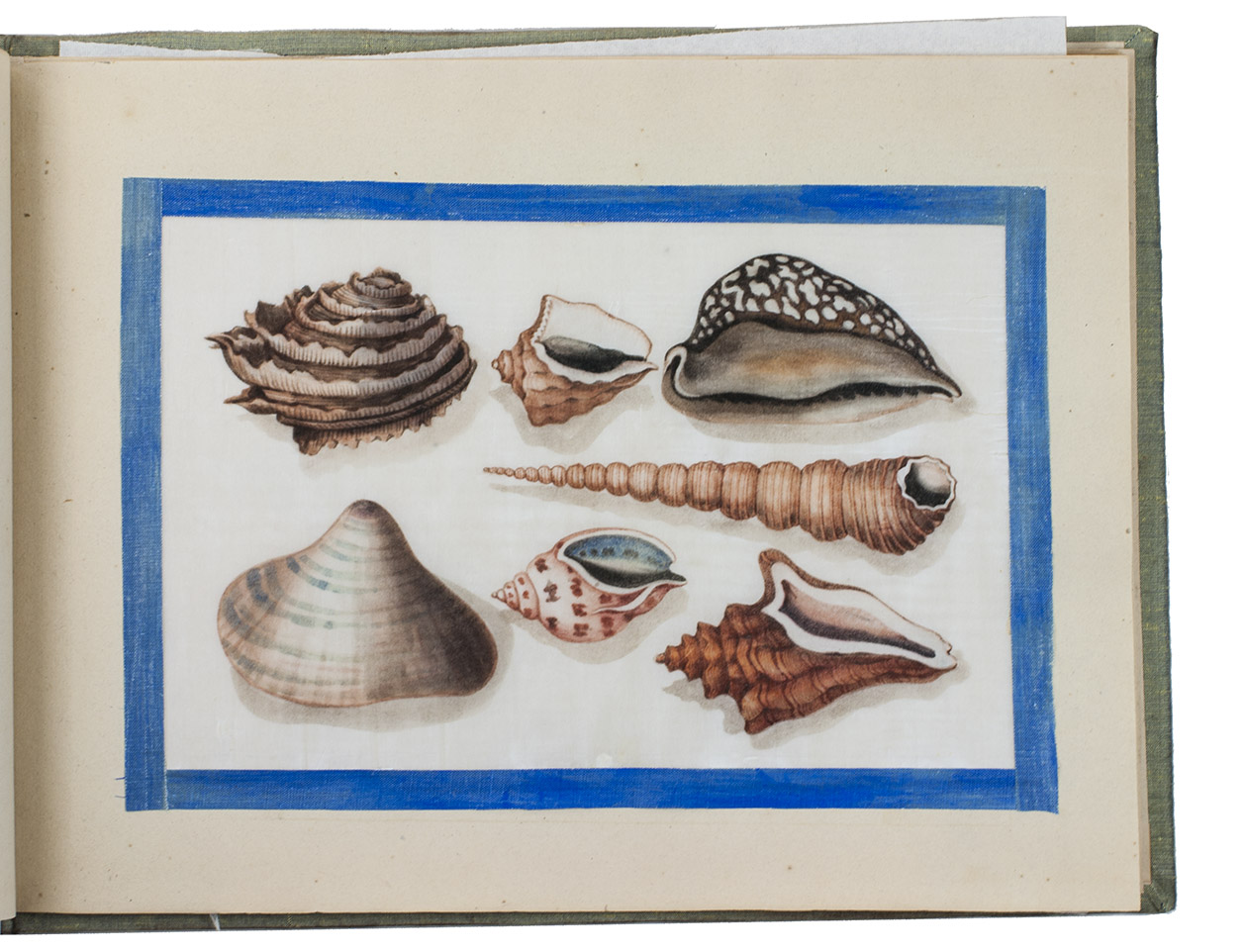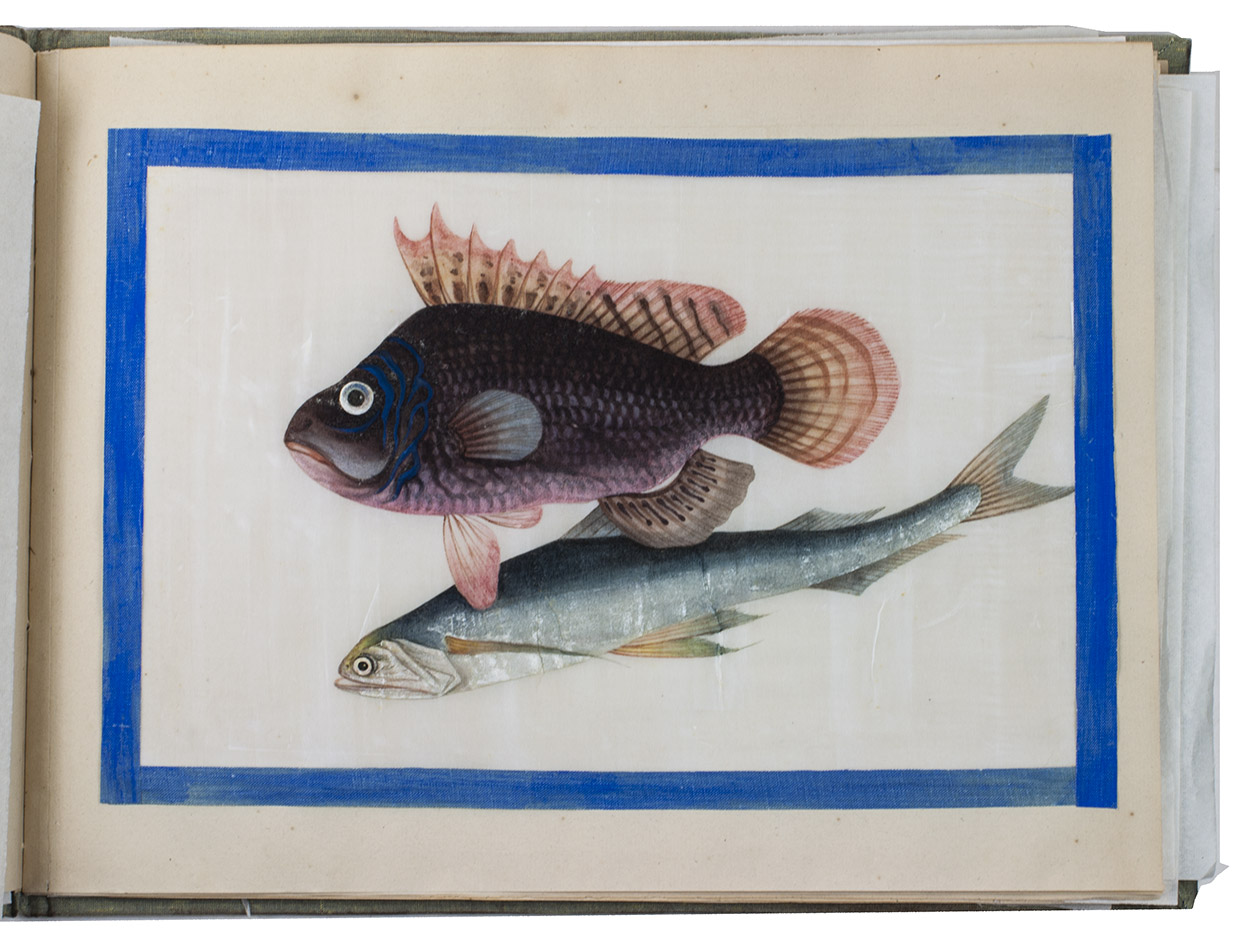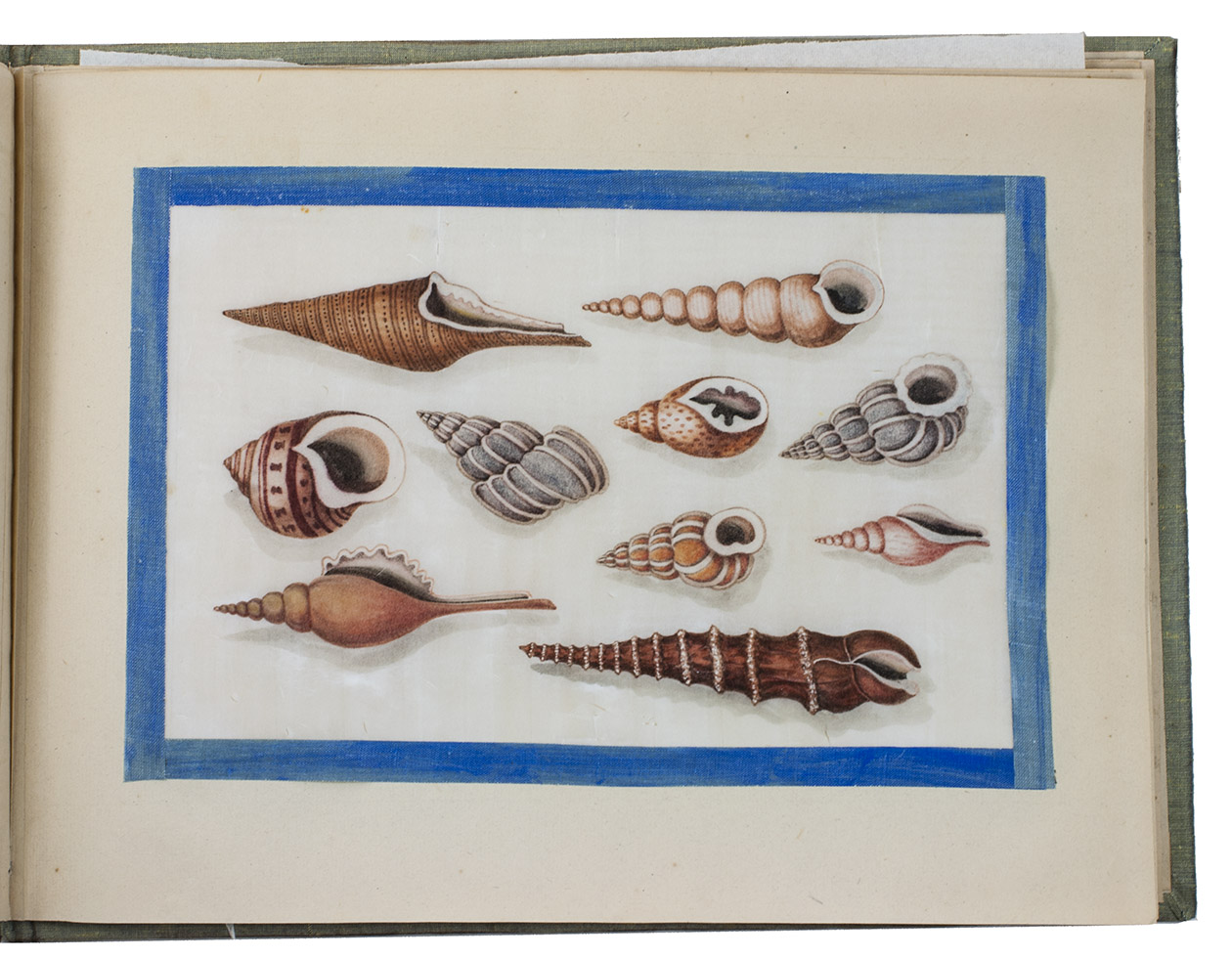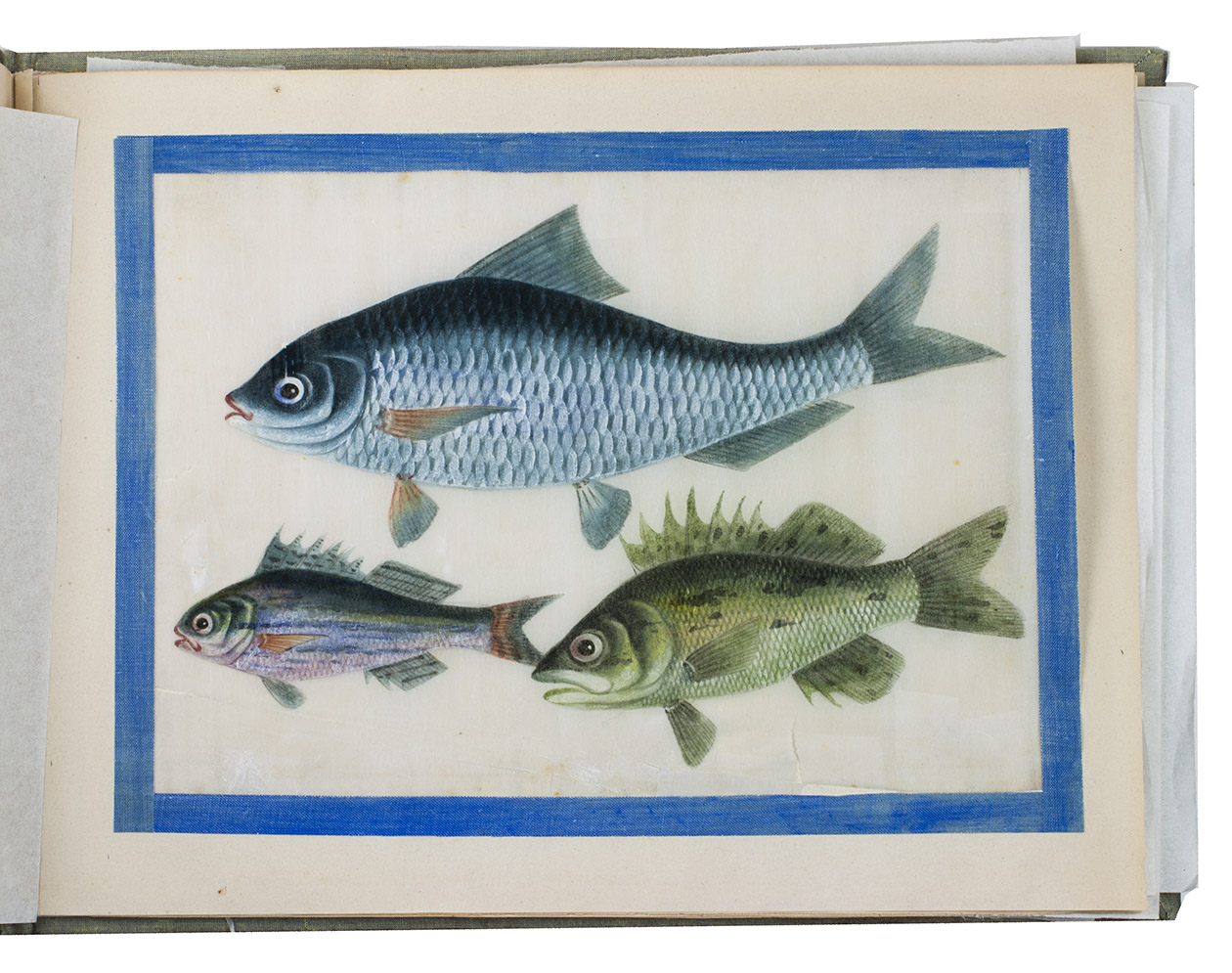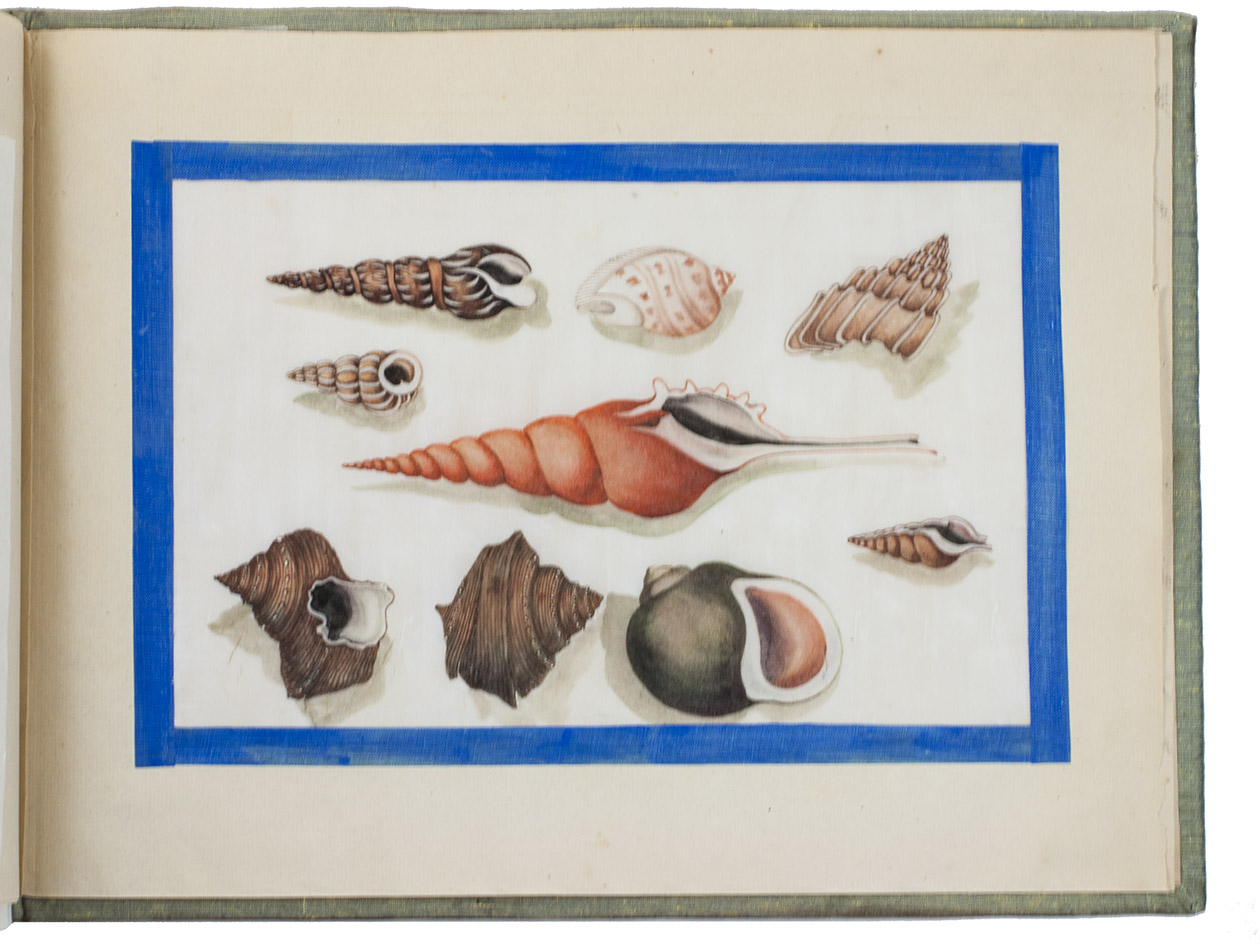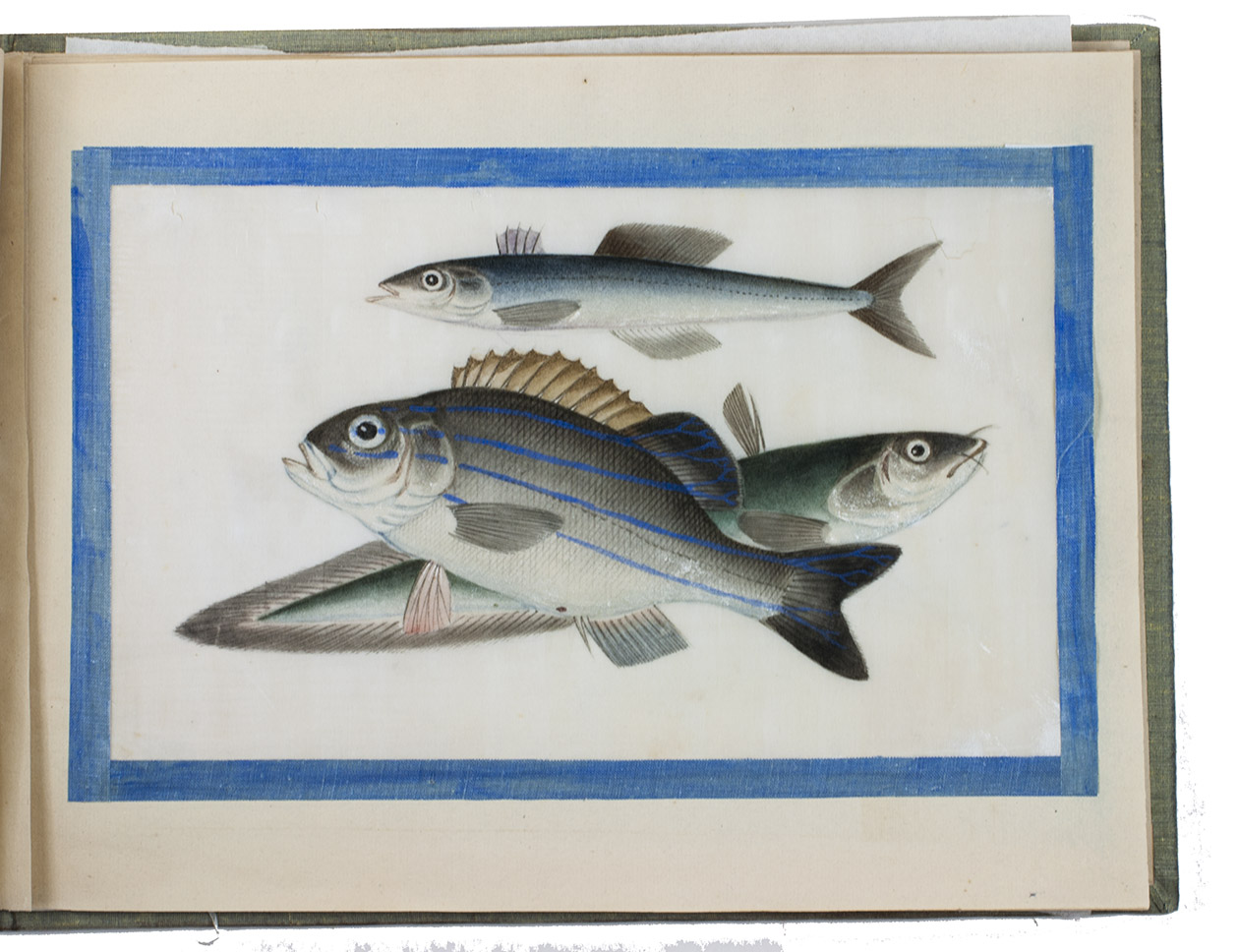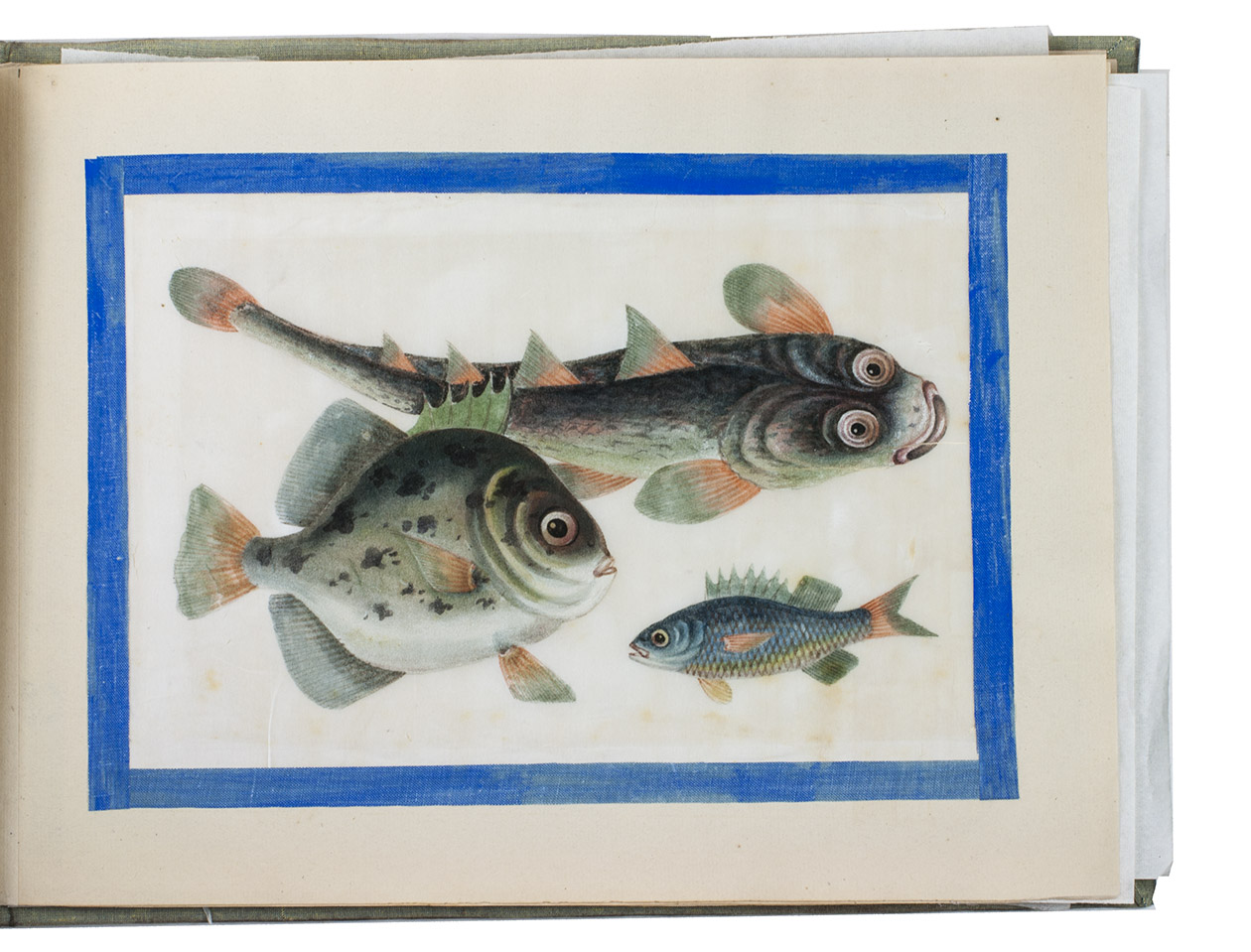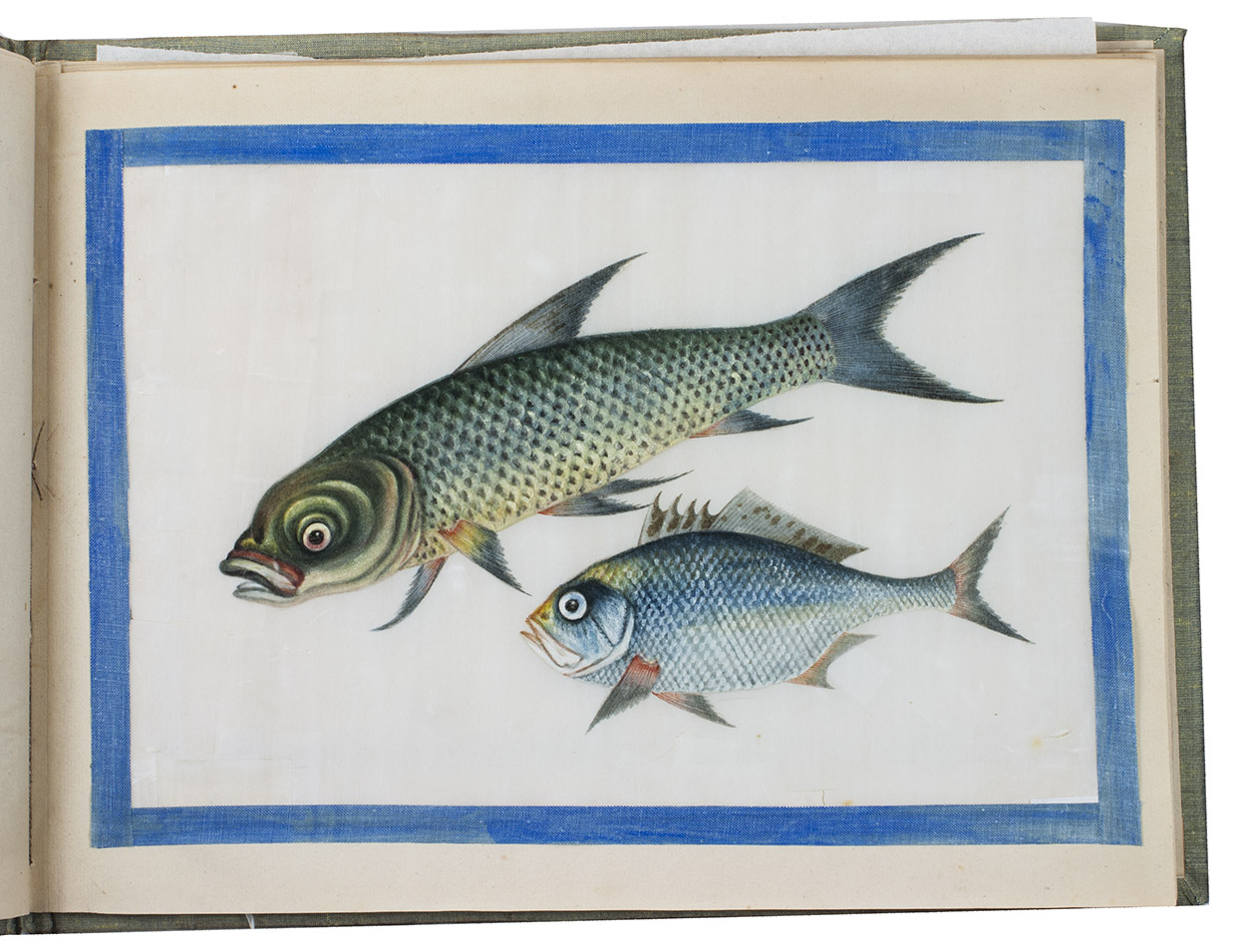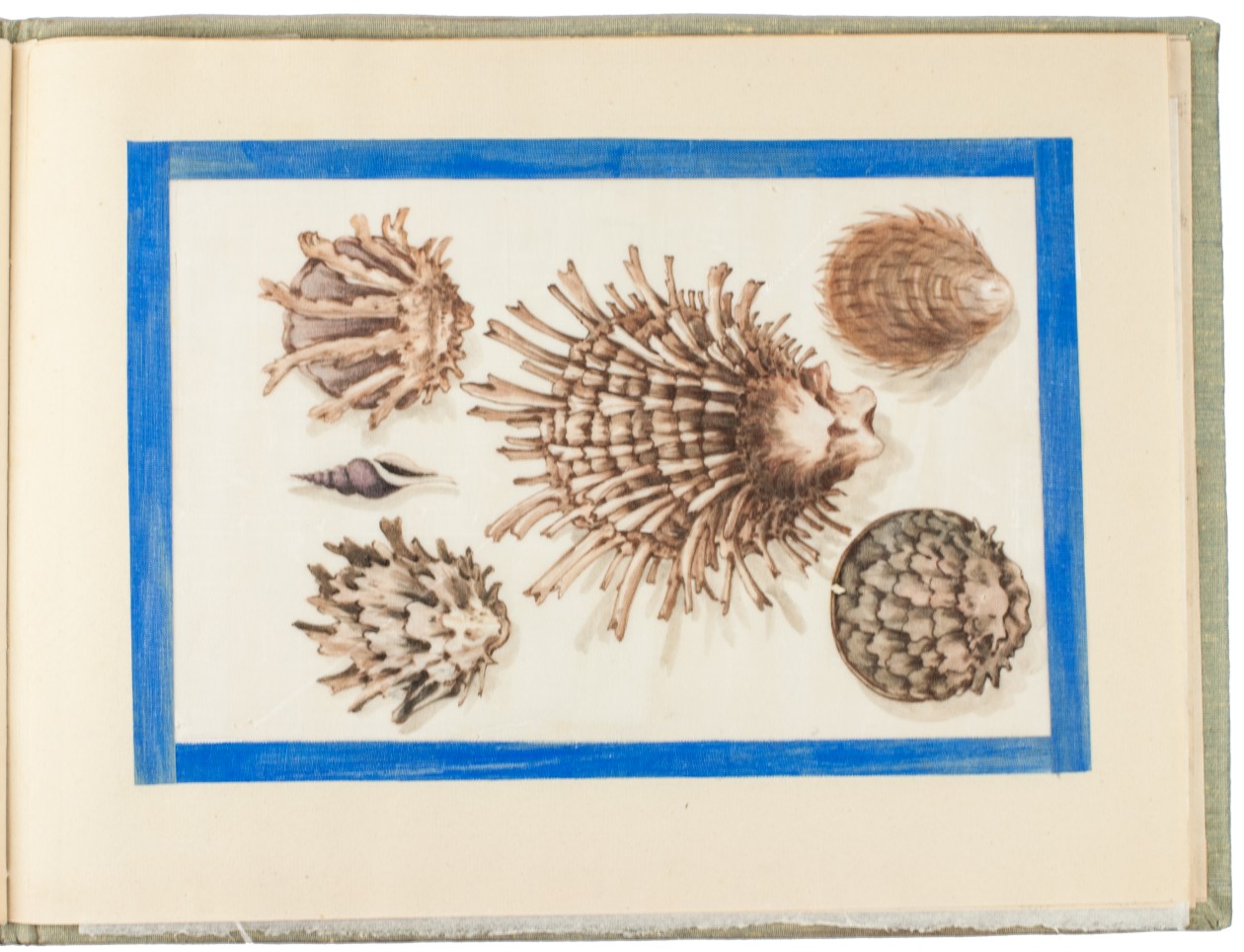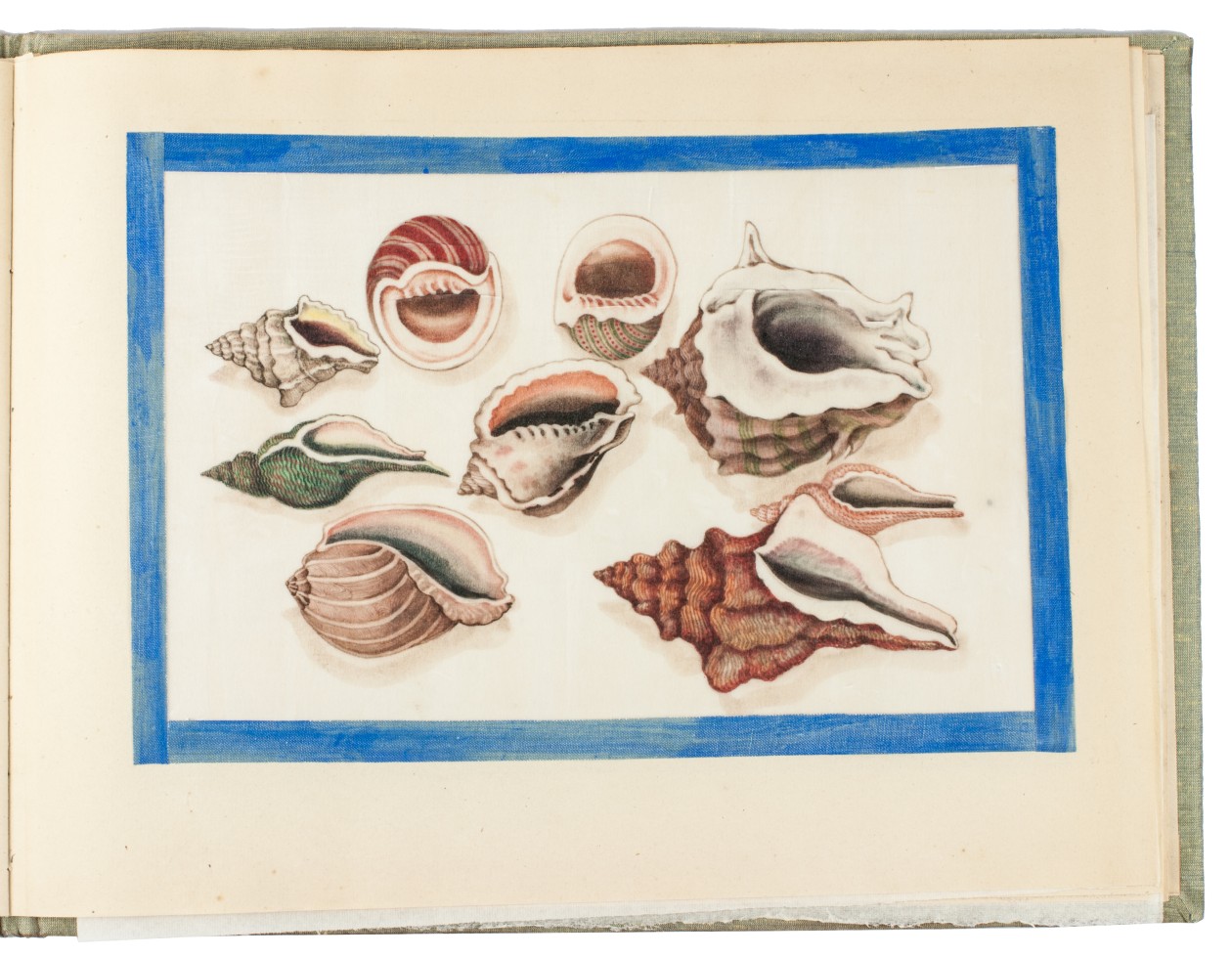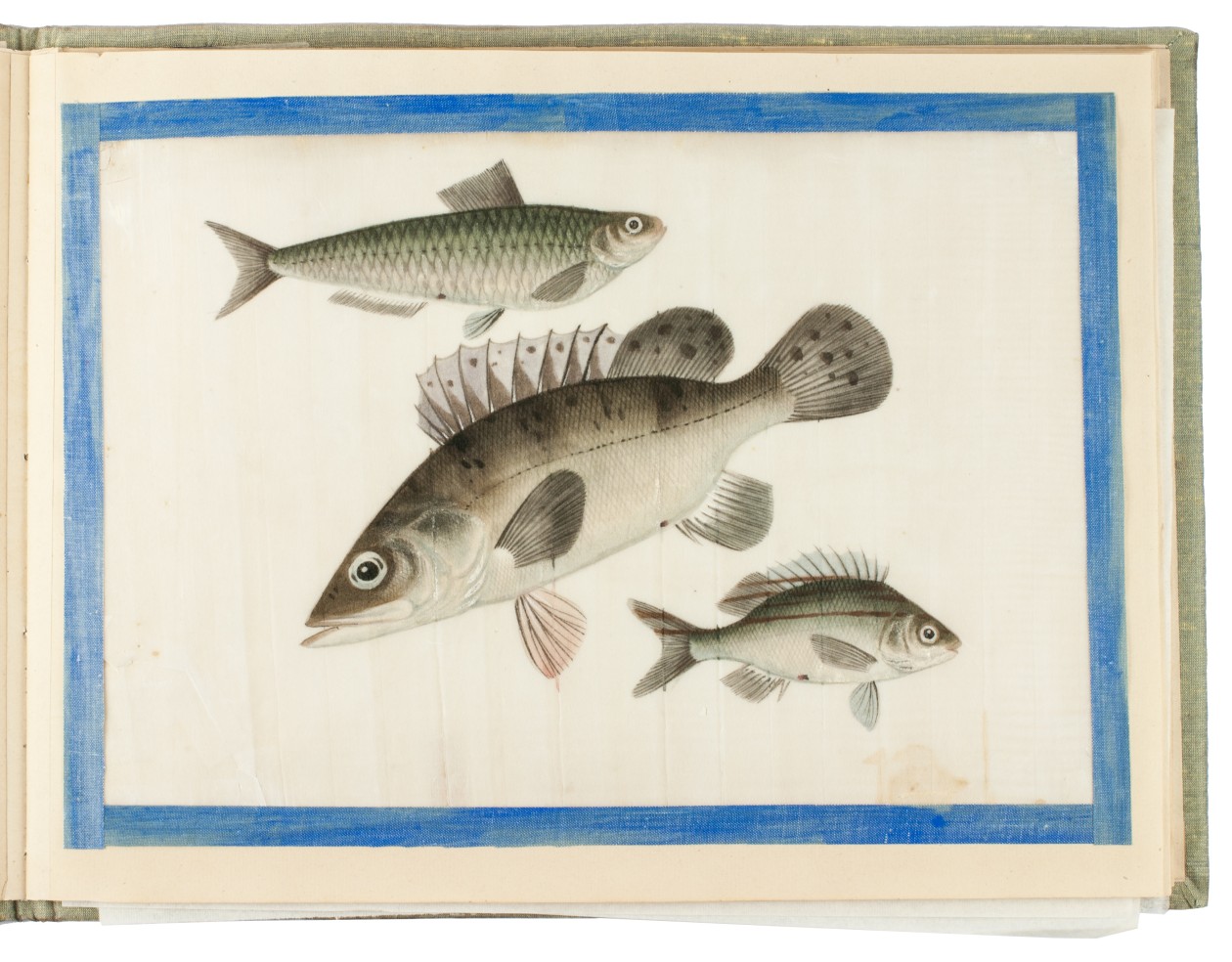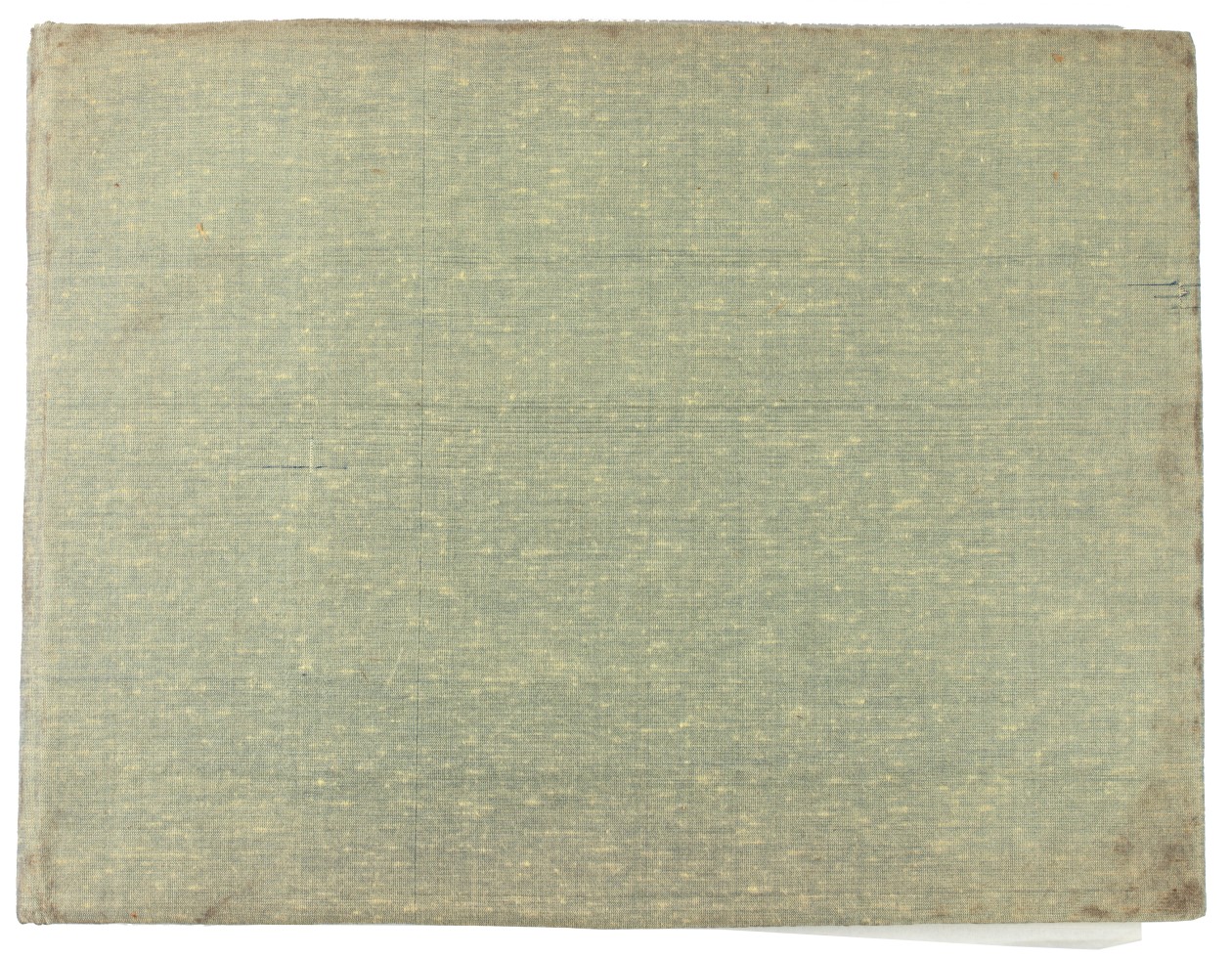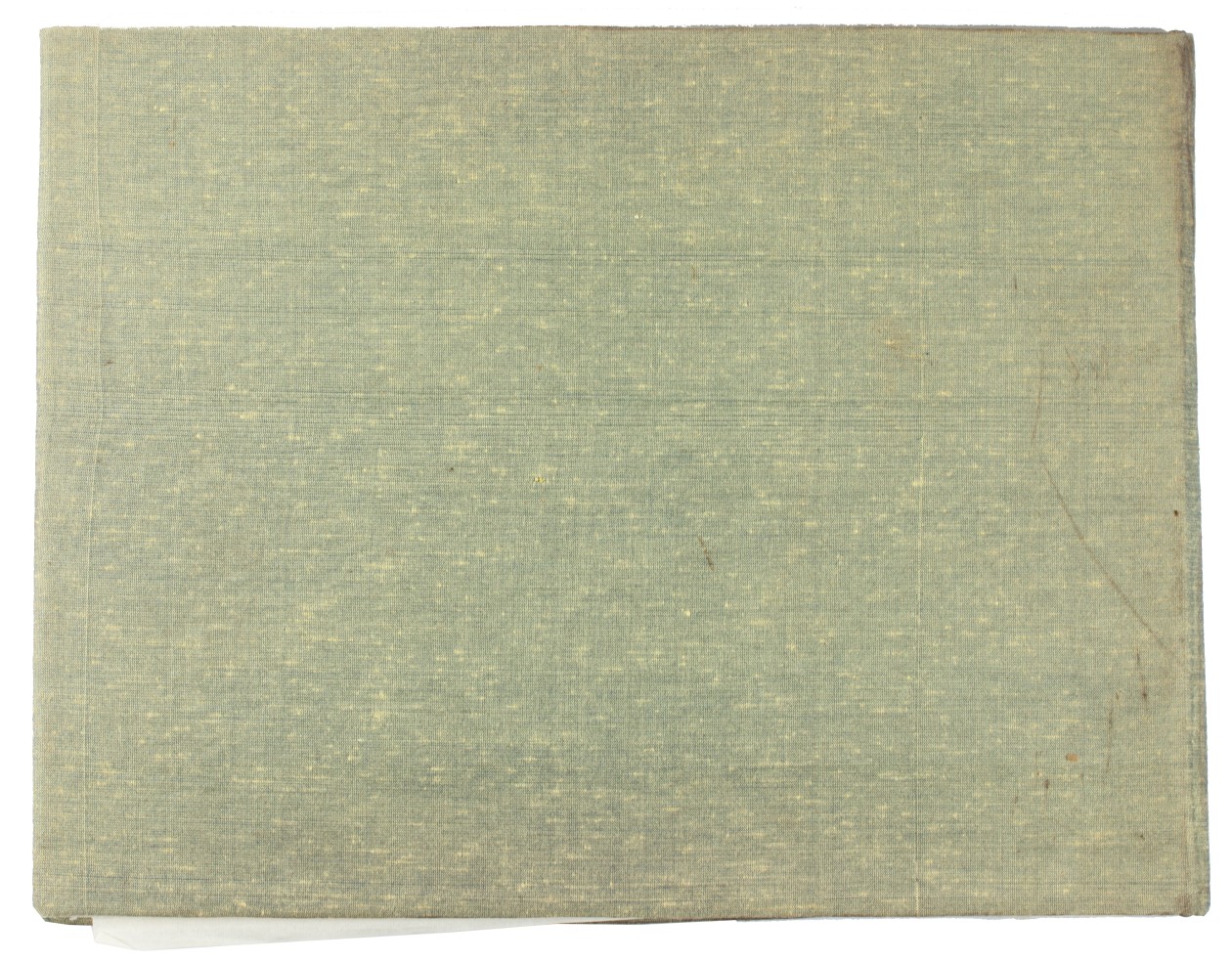[SUNQUA?].
[Chinese fish and seashells].
[Guangzhen (Canton)?, Sunqua?, ca. 1845/55?]. Oblong folio album (26.5 x 34.5 cm). 14 drawings depicting 72 fish and seashells in coloured gouaches, the fish with gold and silver speckles to give a metallic effect to the scales, executed on pith paper (18 x 29 cm), framed with 4 strips of blue silk, and with a loose tissue leaf inserted before each drawing. Contemporary boards, covered with yellow-green silk. [14] ll.
€ 18,000
Fourteen beautifully executed Chinese drawings showing 25 fish (including 1 eel) and 47 seashells, in coloured gouaches with gold and silver speckles to render the metallic lustre of the scales, drawn on pith paper (sometimes confusingly called "rice paper"). They show a consistent style and were clearly produced as a series. The first 8 leaves contain fish, with 2 to 6 specimens in each drawing; the last 6 contain sea shells, with 6 to 10 specimens in each drawing. In at least most cases, each specimen represents a different species. The fish include a catfish and an eel. The seashells include whelks and conchs, cowrie, clams, snails (many with spectacular spiral cones) and bi-valves with a wide variety of exotic-looking protrusions. The drawings are simple renditions of the specimens, without background scenes or plants, but depicted with considerable detail, so that it would not be difficult to identify the species. This simplicity might suggest the fairly early work of Sunqua rather than Tingqua, but the dearth of well-documented examples makes the ascription tentative.
Chinese artists seem to have begun making coloured gouache drawings on pith paper in the 1820s, but the genre flourished after China's defeat in the First Opium War opened the country to foreign trade. Most were produced in the port city Guangzhen (Canton province), where the leading artists Sunqua and Tingqua established their studios. They mixed Chinese and Western styles, the present seashells having Western-style shadows with the light coming from above (and mostly slightly to the left). They catered largely to the new export market.
One drawing has a crack running into the largest fish and 2 or 3 others have significant marginal cracks or tears, but the drawings are otherwise in very good condition and the colours remain fresh and bright (they are sensitive to sunlight, so most examples outside of albums have faded). The album binding is also very good. A lovely series of large, coloured Chinese fish drawings, interesting both as art and as examples of Chinese ichthyology soon after China opened its doors to Western scholars. For pith paintings in general: B. Salmen, Chinesische Bilder (2007); I. Williams, "Views from the West", in: Arts of Asia XXXI (2001), pp. 140-149; I. Williams, "Painters on pith", in: Arts of Asia XXXIII (2003), pp. 56-66.
Related Subjects:
